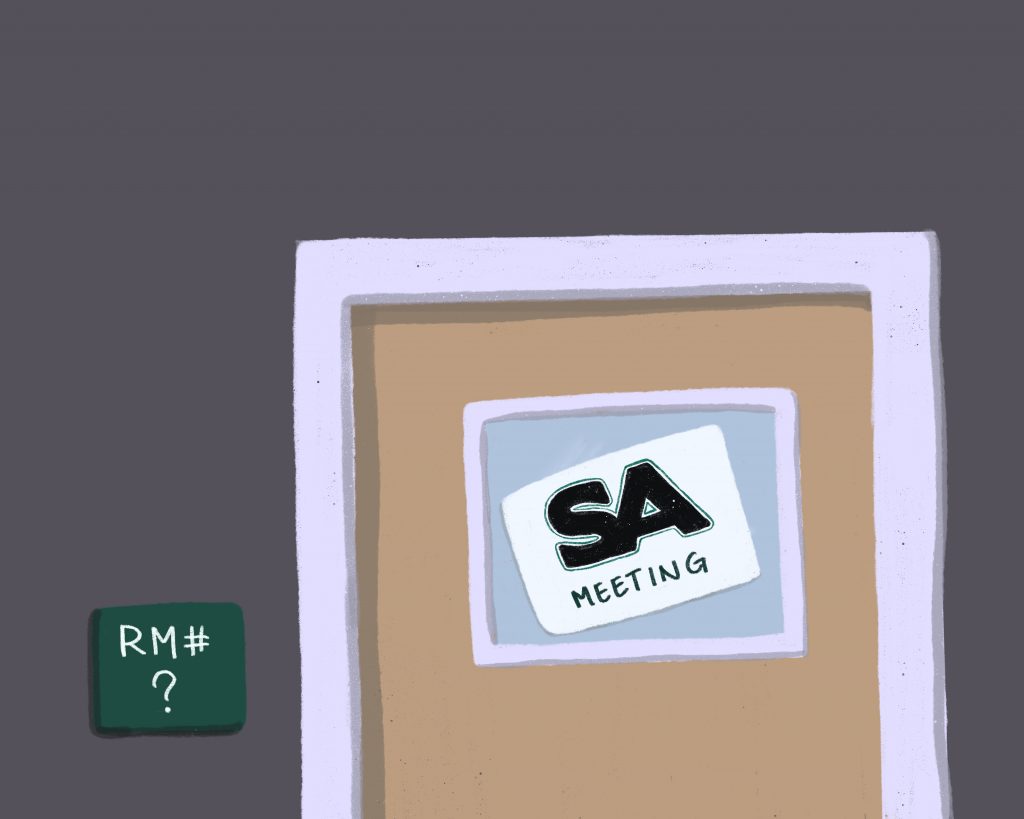As journalists, transparency is a core part of our jobs and how we present information — but it shouldn’t stop with us. We call upon Binghamton University’s Student Association (SA) to adhere to the same principles.
Every other week on Tuesdays, the SA Congress meets to discuss new policies, provide updates on their work and to vote on new legislation. In those same meetings, our journalists diligently take notes in the hopes of informing the student body of any developments. This year, however, those meetings have been difficult to attend — and if it’s that way for us, we imagine it would be more difficult for any student hoping to observe the representatives they voted for.
The first information barrier is the location of the meetings themselves. This year, the room number of SA Congress meetings was not listed publicly on the SA website, despite such being done the year prior. The meetings are open to the public — even featuring a public comment session — and furthering engagement with constituents should be a key goal of any elected representative. After Pipe Dream reported on this lack of transparency last week, the SA updated their website within days to include meeting locations. While we are glad to see this information added, we hope SA representatives will hold themselves accountable in the future.
In addition, meeting minutes — which the SA’s own policies mandate must be uploaded when three consecutive Congress meetings have passed — had not been uploaded for a large portion of the fall semester. Again, this was amended shortly after our news coverage.
As SA President Nia Johnson stated, the SA relies primarily on word of mouth to gather students to attend their meetings, often encouraging their members to ask friends to join in. Though this is certainly an important form of outreach, the SA must begin with the basics. With Congress having switched meeting locations multiple times this past year — and even moving a meeting to Zoom without formal announcement — encouraging attendance only gets more difficult.
To the general student body, this can have real implications. With SA elections having run their course — and the BU Council Representative being announced last week — next year’s student leadership is set. But concerningly, the amount of students actually voting in the elections remains low at 2,039. In the years since the onset of COVID-19 this is nothing unusual for the SA, but when looking at the history of SA voter turnout it becomes worrying.
In 2016-17, 2,735 students voted in SA elections, followed by 3,063 and 2,855 in the years following. In 2019-20, turnout dipped to 2,062 — and it seems to be remaining there. We at Pipe Dream are no strangers to building up our presence after the pandemic, and we recognize the difficulties associated with this. Still, holding SA Congress meetings in an open, transparent and well-communicated fashion — the way they are meant to be held — is a start at solving this problem.
Johnson’s ideas to consider using SA-Line or other means of communication to broadcast SA Congress information to students would be a great start, and we encourage next year’s leadership to consider ways to go further. We are glad to see transparency becoming a growing part of conversation — using social media and other outlets students frequent to spread awareness of SA Congress meetings would be another step forward.
We are all students in the end, and this is an opportunity for the SA to learn and grow. This is not the first time that Pipe Dream has noted a lack of transparency in Congress, but we hope next year’s leadership will make sure it is the last.



